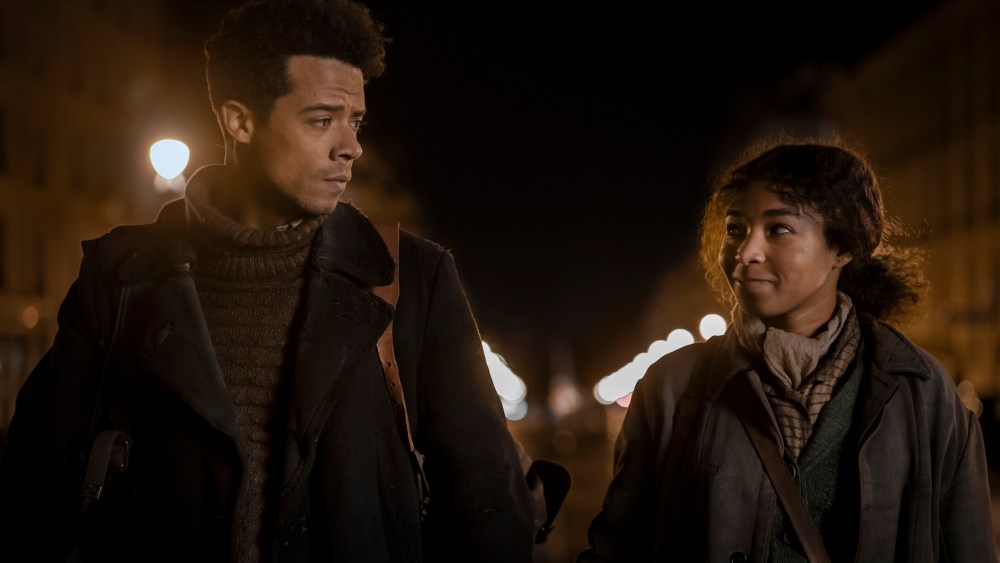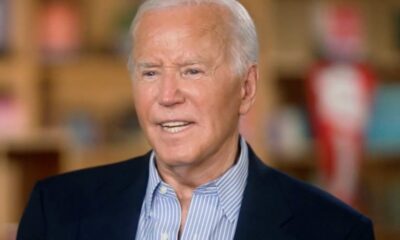Entertainment
‘Interview with the Vampire’ season 2 review: A Bloody Good Time

In a sea of rote, listless IP, the first season of AMC’s “Interview With the Vampire” felt like manna from heaven — or blood to a thirsty nightwalker. Yes, the show was part of a reverse-engineered attempt at a cinematic universe by Anne Rice. But in the hands of showrunner Rolin Jones, “Interview With the Vampire” stood apart from both Rice’s original and the 1994 film adaptation while retaining the story’s gothic romance.
Despite an extended hiatus and a major recast, season 2 is as fresh as a newly opened vein. In the flashbacks that form the primary timeline, Louis de Pointe du Lac (Jacob Anderson) has left New Orleans for World War II Europe, taking with him the spirit of his creator and ex-lover Lestat (Sam Reid). The transatlantic journey takes Louis to the Théâtre des Vampires, a Parisian troupe that is actually a front for a nocturnal coven led by 500-year-old Armand (Assad Zaman). In scenes set in the present, a framing device with events entirely new to the series, Louis and Armand share a luxury apartment in Dubai, where they host cynical journalist Daniel Molloy (Eric Bogosian). The relationship was treated as a revelation in last season’s finale; in the new episodes, the show begins to fill in the gaps of their decades-long collaboration.
“Interview With the Vampire” impressed by translating the homoerotic charge of the supernatural bond between Louis and Lestat from subtext to text. Armand spent season 1 disguised as a servant. With his new active role, the show’s emphasis on queer sexuality extends beyond Louis’ tumultuous time with Lestat. After killing his old lover (or so he thinks – he couldn’t bring himself to burn the body), Louis is confronted with the question of what vampirism and gay life might look like outside the man who introduced him to both. In Dubai, Louis and Armand present themselves to Molloy as a ‘happily ever after’ – a healthy alternative to a folie à deux. But opening up to an outsider reveals cracks in this facade, a subtle exploration of cyclical trauma that balances ‘Interview With the Vampire’ with madcap excess.
In the show’s other major innovation, both Louis and his surrogate daughter Claudia (Delainey Hayles), who was converted by Lestat at age 14 to complete their pseudo-family, are black. This choice gives new resonance to vampires as a proxy for the demonized other. When the duo arrive in France, Louis has an awakening in the same way as many mortal Americans, such as James Baldwin, who was enthusiastic about a society without legal segregation. Claudia was initially played by Bailey Bass, who imbued the new super-powered teen with a manic, impulsive glee. Hayles’ performance is different, aside from some bumpy accent work, mostly for the better. With a few decades of afterlife behind her, the Claudia of season 2 has come to terms with the tragedy of eternal childhood. Hayles channels the melancholy and loneliness of her character’s fate, as well as the physical comedy of an angry Claudia having to wear a ruffled child’s costume on stage.
Like ‘True Blood’ before it, ‘Interview With the Vampire’ understands that a great vampire story combines genuine eroticism with campy flair. As Lestat’s ghost, Reid is more appealing And more unhinged than he’s ever been. Molloy started the series as an arch commentator who skewered the vampires’ self-interest, and continues to play that role in Season 2. (“You both fucked Lestat!” he crows after Armand reveals some romantic history.) But the writer also gets more vulnerability and agency as the series progresses. “Interview With the Vampire” takes the opportunity to expand Rice’s canvas and continues to add layers of paint. It’s the best kind of bloody mess.
Season 2 of “Interview With the Vampire” premieres May 12 on AMC and AMC+, with new episodes delivered weekly on Sundays.













